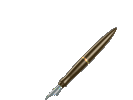 |
 |
TENDENCY |
 |
| | |
| | |
 |
Personal Pagina J. R. means to make know my paintings I swell - My Oleos -, clear that single ésto is very poor, then pense in showing to my city the Rioja, while leia on History of the Art, its geniuses, its works, the Artisticos Styles, and those that they publish in books, documentary or Internet all the referring one to the Art of the painting. ...then, I realized that is infinite, that every time knows more, and more documents, and than he is useful, for peculiar and the enthusiastic ones of the Art. The painting - a subject is everything -, and I wanted this way to learn and to contribute minimo, in this one Page, the information is for all - nothing that this writing in this one, on Art or Painting belongs to me, are made with my own hands the Oleos that will see in: My Oleos, that I hope, comments out some or criticizes, please.  |
 |
| | |
| | |
 |
The tendency to which I incline is the Impresionismo, profit as soon as to express a feeling, it is a game of forms and colors, my pasin and to please they become reality before each effect, before - what for my he is beautiful, surely, found thousands of defects, on perspective, shades, texture, etc. but as they say the great ones "It is necessary to work like a worker" - Matisse -, to work is también to think, "to take the picture in the head" "Monet to go by the street "and to occupy the spirit in observing the faces of the men and the women in days of overcast sky" - Leonardo gives Vinci-; they are phrases of geniuses, great even clésicos jamés (there are others). In my single case I nourish myself and I illustrate of its works, and I look for to do what I can, although sé that nothing sé (they know of who is the phrase), not even to draw or to paint, already I will arrive the day that can create.  |
 |
| | |
| | |
 |
Some Reflections. |
 |
| | |
| | |
 |
...one crossed by painting books. .. |
 |
| | |
| | |
 |
"the idea that the dead nature - bodegón -, is a good subject to teach and to learn to paint", Pacheco it recommended its disciples Velézquez and Zurbarén, |
 |
| | |
| | |
 |
Visit Museum of the Prado: www. museodelprado. mcu..es |
 |
| | |
| | |
 |
Pagina nueva 1
|
 |
| | |
| | |
 |
 that to learn they painted small things of the daily life, like foods, fruits. .. it says: -José Parramón- in its book ' bodegón to the oil'. that to learn they painted small things of the daily life, like foods, fruits. .. it says: -José Parramón- in its book ' bodegón to the oil'. |
 |
| | |
| | |
 |
Dead nature or Bodegón, pictorial representation of inanimate objects, like fruits, flowers, hunts, musical utensils, books or instruments, grouped generally on a flat surface. |
 |
| | |
| | |
 |
The subject of the died nature, simple and without pretensions, usually does not have importance by itself; means represent més well so that the painter practices the composition and the representation of details and textures. |
 |
| | |
| | |
 |
Own elements of bodegones are visible in the Roman Art of the antiquity, in mosaics and paintings murals probably based on Greek models, and in some cases they are let glimpse in the gothic art. With a different affluent will, the aspects of the natural world in the Chinese art and japonés imagine of sensible form. Nevertheless, bodegón as determined form of affluent art, is fundamentally a western phenomenon subsequent to the Renaissance. A painting exists on table (1504, Alte Pinakothek, Munich), of veneciano painter Jacopo de Barbari, who represents a dead perdiz and a pair of guanteletes, that usually is considered like first bodegón true. The later development of the género took place in the Netherlands fundamentally where artists like Jan Brueghel, Pieter Claesz, Willem Kalf and Frans Snyders painted pictures of floreros and tables with fruits and hunts, represented with exuberantes textures and great wealth of details. In Spain, it emphasized of very special way the austere sobriety of bodegones of Juan Sénchez Cotén, in whom a series of pieces, generally of fruit, is distributed in geométricas compositions on a shelf with an almost mystical simplicity. |
 |
| | |
| | |
 |
In other countries, the dead nature was considered as the less important form of the art, until, in century XVIII, the painter francés Jean-Baptiste Simeon Chardin demonstrated his expresivas possibilities with his works of calmed harmony. The importance of bodegón grew throughout the following century until reaching the place that deserves with the work of the painter francés Paul Cézanne, whose numerous pictures of apples and oranges constitute masterpieces of formal composition. Bodegón became one of excellent the artistic forms més of principles of century XX to the being used by artists like the Spaniards Pablo Picasso and Gray Juan and the French Henri Matisse and the Georges Braque, among others, like an average one for its experiments of cubism, fauvismo and expresionismo. |
 |
| | |
| | |
 |
Fte: "died Nature", Encyclopedia Microsoft(R) Encarta(R) 98. |
 |
| | |
Copyright © 2000 JuaniRojas.
Todos los Derechos Reservados.
| | |
 |
Lunes, 15 de Enero de 2001. |
 |
| | |
|
 |

